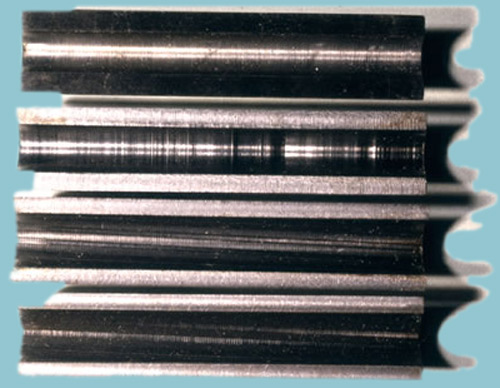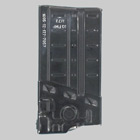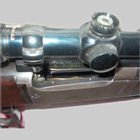Home | Glossary | Resources | Help | Contact Us | Course Map
Archival Notice
This is an archive page that is no longer being updated. It may contain outdated information and links may no longer function as originally intended.
Long or Shoulder Firearms
Long (shoulder) firearms fall into two groups - rifles and shotguns. As the name implies, these firearms are designed to be fired from the shoulder using both hands. Although barrels can be shortened, the original design determines whether it is a rifle or a shotgun.
Shoulder-fired weapons with rifled barrels (lands and grooves) are rifles, and those with smooth-bored barrels are shotguns. It should be noted that a number of shotguns are manufactured with rifling in the barrel for use with slug loads. If the caliber designation is stated as gauge, it is classified as a shotgun (one exception is the 410 Bore designation).
Rifles
The category of rifles is very large, ranging from a single shot .22 caliber gallery rifle to a .50 caliber semiautomatic rifle. They can be single-shot, multibarreled, or magazine fed.
Rifles incorporate several action types, including these:
- Bolt
- Pump (or slide)
- Autoloading
- Lever
- Falling block
- Rolling block
The four types of rifle magazines:
- Removable box
- Internal box
- Rotary
- Tubular
Visual Examination
Visual examination of the firearm will determine the following:
- Type of magazine.
- Type of action.
- Caliber designation (this can be difficult to determine when examining foreign and/or military rifles because most are not marked with the caliber designation).
- Telescopic sights, (most of which have multiple adjustments within the scope).
- These settings should be recorded, including the variable magnification setting.
- Safety - most rifles have some type of external safety and possibly a disconnector safety.
The term "assault rifle" refers to compact, select-fire, detachable box magazine-fed firearms that use a centerfire rifle cartridge and are designed primarily for military use. Many rifles resemble a true assault rifle because they have a military-like appearance. These do not have a selector and operate only in the semiautomatic mode. They may be modified in an attempt to make them fire in full automatic mode.
Shotguns
Shotguns have single- or double-barrel configurations. Double-barrel configurations can be side by side or over/under and generally have a break open action.
Single barrels use the following action types:
- Break open
- Pump (or slide)
- Bolt
- Semiautomatic (gas and recoil operated)
Shotguns also have barrel constrictions (choke) that control the pellet pattern spread. Choke is used in all gauges of shotguns.
The most common types of choke:
- Full (most restriction)
- Modified (some restriction)
- Cylinder (no restriction)
There are other less frequently used choke sizes as well as variable chokes. Newer shotguns can have interchangeable chokes
Additional Online Courses
- What Every First Responding Officer Should Know About DNA Evidence
- Collecting DNA Evidence at Property Crime Scenes
- DNA – A Prosecutor’s Practice Notebook
- Crime Scene and DNA Basics
- Laboratory Safety Programs
- DNA Amplification
- Population Genetics and Statistics
- Non-STR DNA Markers: SNPs, Y-STRs, LCN and mtDNA
- Firearms Examiner Training
- Forensic DNA Education for Law Enforcement Decisionmakers
- What Every Investigator and Evidence Technician Should Know About DNA Evidence
- Principles of Forensic DNA for Officers of the Court
- Law 101: Legal Guide for the Forensic Expert
- Laboratory Orientation and Testing of Body Fluids and Tissues
- DNA Extraction and Quantitation
- STR Data Analysis and Interpretation
- Communication Skills, Report Writing, and Courtroom Testimony
- Español for Law Enforcement
- Amplified DNA Product Separation for Forensic Analysts









